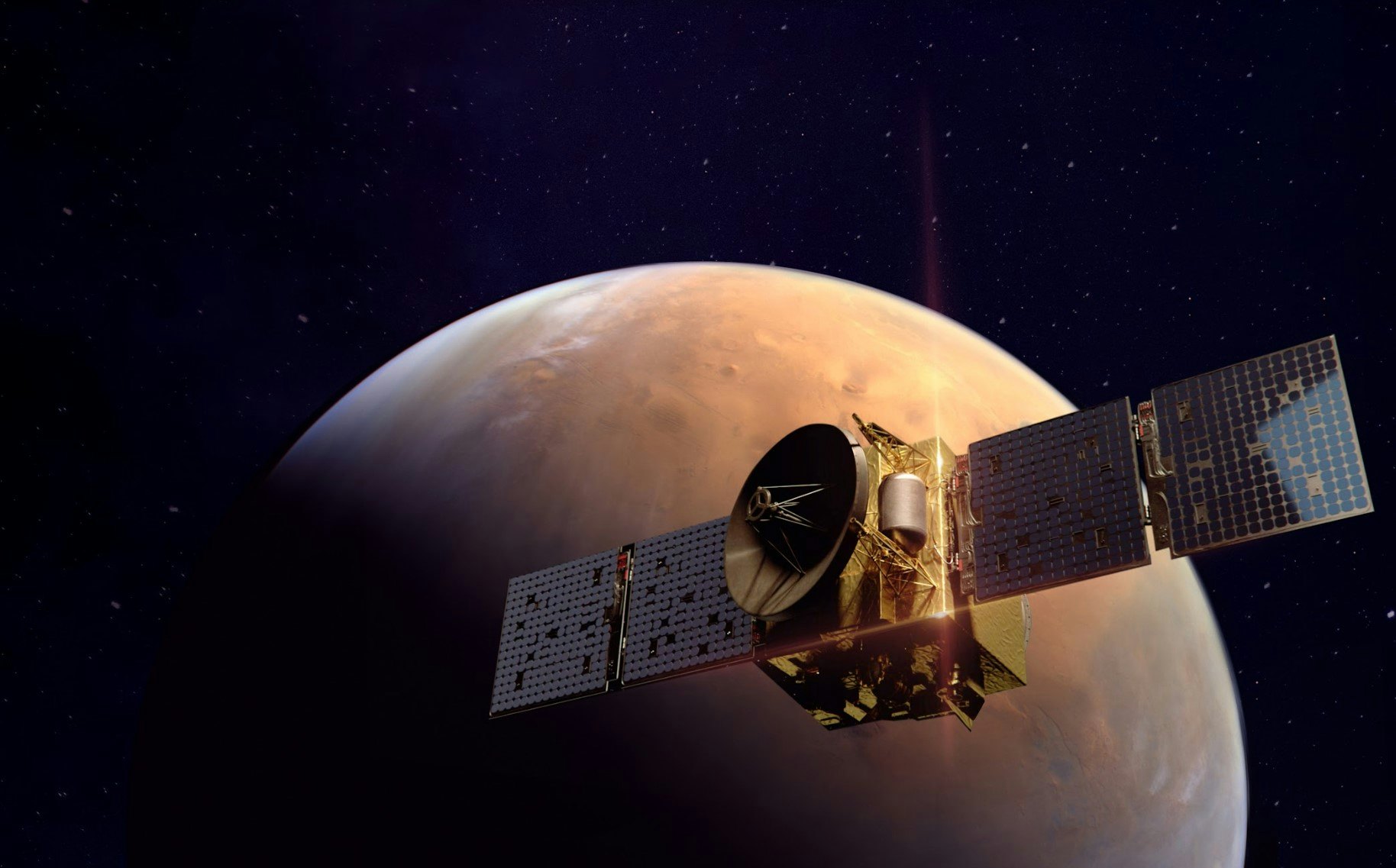
Mars welcomed the first interplanetary mission from the United Arab Emirates in February 2021. On Wednesday, this mission, called Hope, announced it caught sporadic auroras over Mars’ skies.
Hope’s EMUS instrument — short for Emirates Mars Ultraviolet Spectrometer — detected ultraviolet sparks of hydrogen known as patchy proton auroras. The finding has excited the Emirates Mars Mission, which runs Hope, because it’s a new kind of observation.
Proton auroras first appeared to their collaborator, NASA's MAVEN mission — short for Mars Atmosphere and Volatile EvolutioN — and subsequently showed up in data from the European Space Agency’s Mars Express mission. But these two probes showed auroral emissions that were uniform across the dayside of Mars, while the Emirati system sees blotches, adding key insight into the aurora on Mars.

Why it matters — By getting a close-to-complete view of Mars’ upper atmosphere, scientists can perform robust investigations into the past of Mars’ atmosphere and how it functions today.
One elusive aspect of Mars’ history is tied to the escape of its atmospheric blanket off into space. Missions have been surveying Mars for decades, and they continuously find evidence that suggests Mars was wet and warm. At some point, the planet experienced atmospheric loss, leading to the desolate desert world we see today.
This work is one important step on Hope’s mission, which is to complete its initial four-year mandate to orbit over the Red Planet’s equator in order to understand its atmospheric evolution and escape.
Who discovered it — The Emirates Mars Mission tasks Hope’s EMUS instrument to study the disk of gas that surrounds Mars. It seeks to measure the hydrogen and oxygen in Mars’ outermost atmosphere called the exosphere, where gas escapes into space. A collaboration with MAVEN allows the team to paint a fuller picture about what could be at play over the Red Planet.

What they discovered — This type of proton aurora is new. The team thinks that charged particles spill out from the Sun as solar wind, and when they reach the hydrogen atoms high above Mars’ daytime side, they scatter sunlight and emit ultraviolet light. While EMUS catches the flash, MAVEN studies the solar wind plasma, the state of matter past gas.
According to the team, EMUS and MAVEN are collectively revealing the first unambiguous global map of where the solar wind is striking Mars. Each instance is a moment where the charged material impacts a corner of Mars’ upper atmosphere.
What’s next — Mars is now in the throes of summer (at least in its southern hemisphere). This season is ripe for proton aurora. NASA and the Emirates Mars Mission look forward to discoveries of new such oddities high above the Red Planet in the near future.







